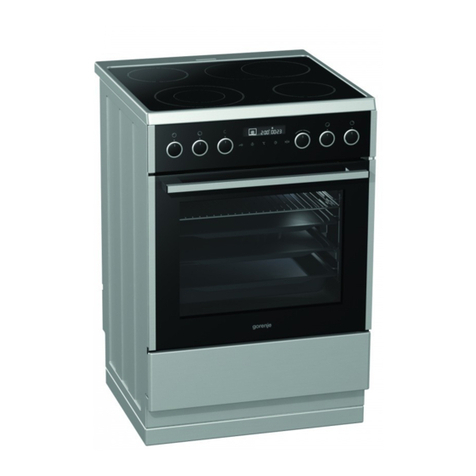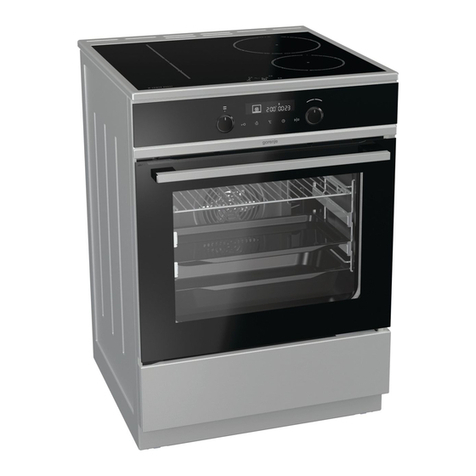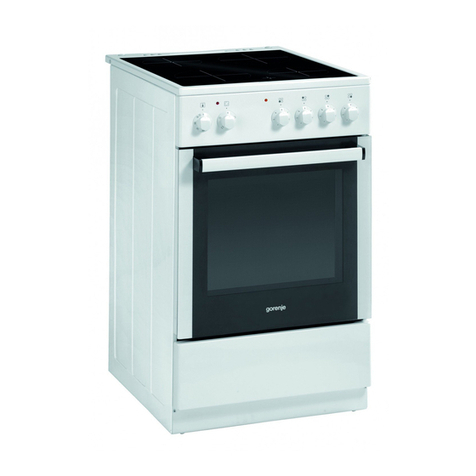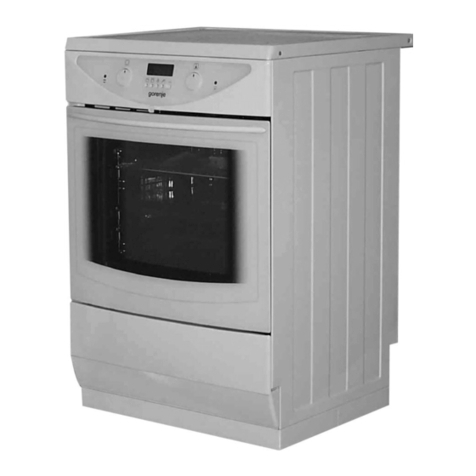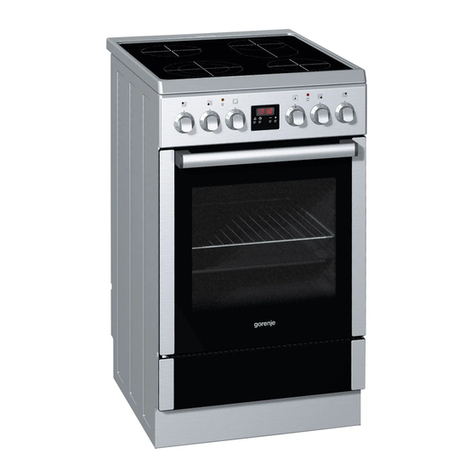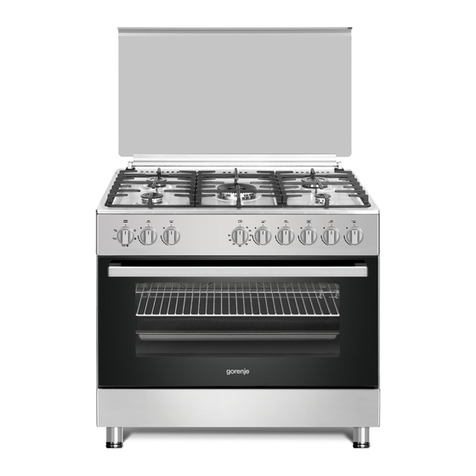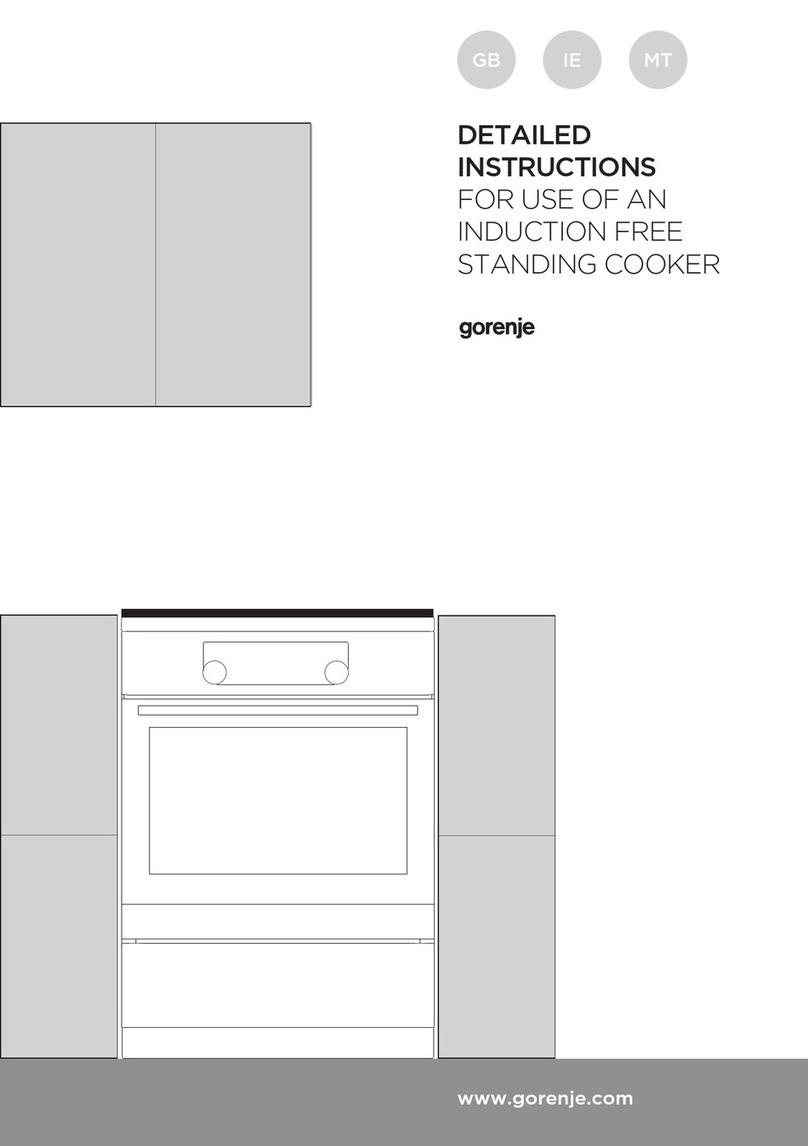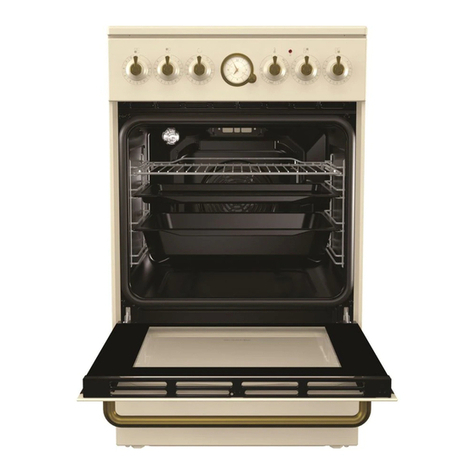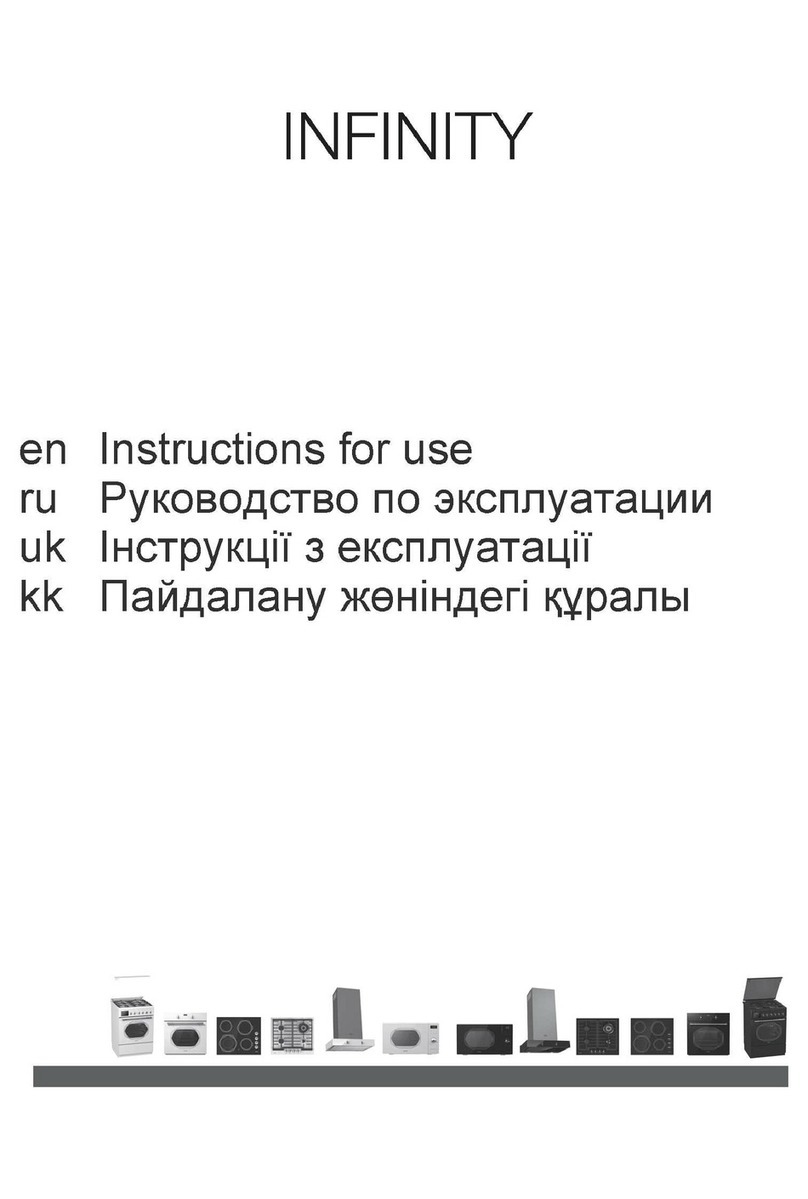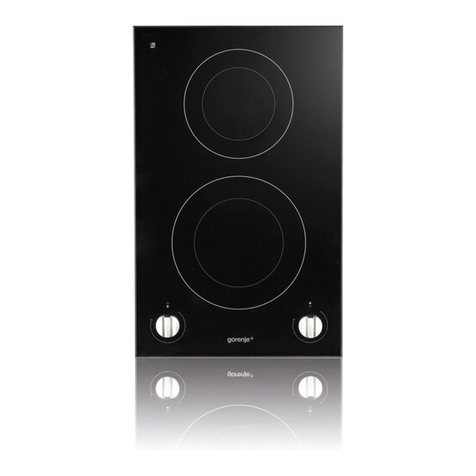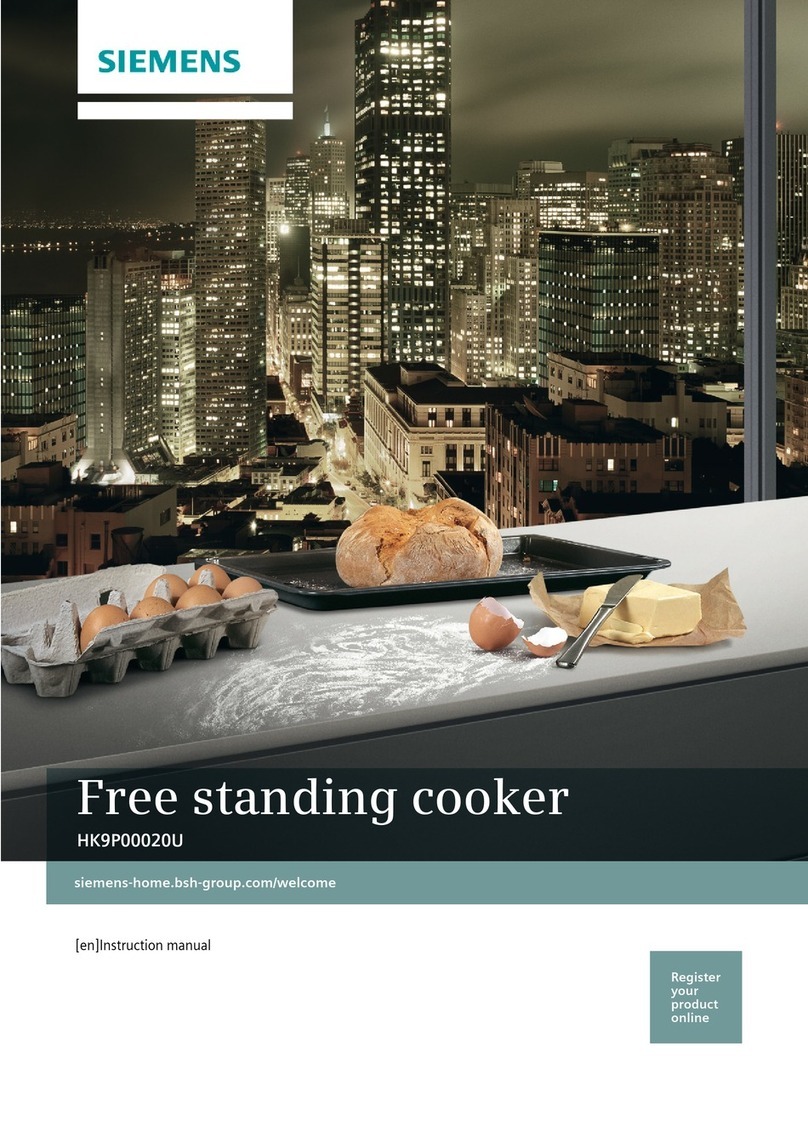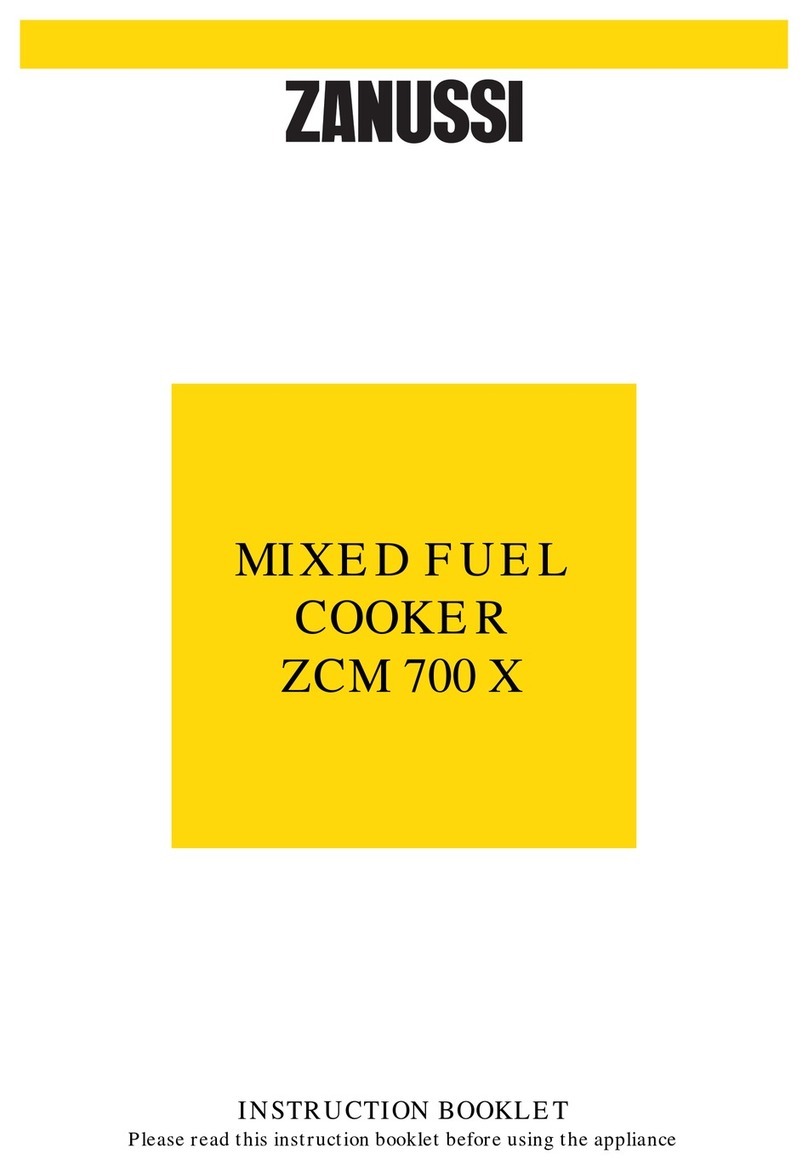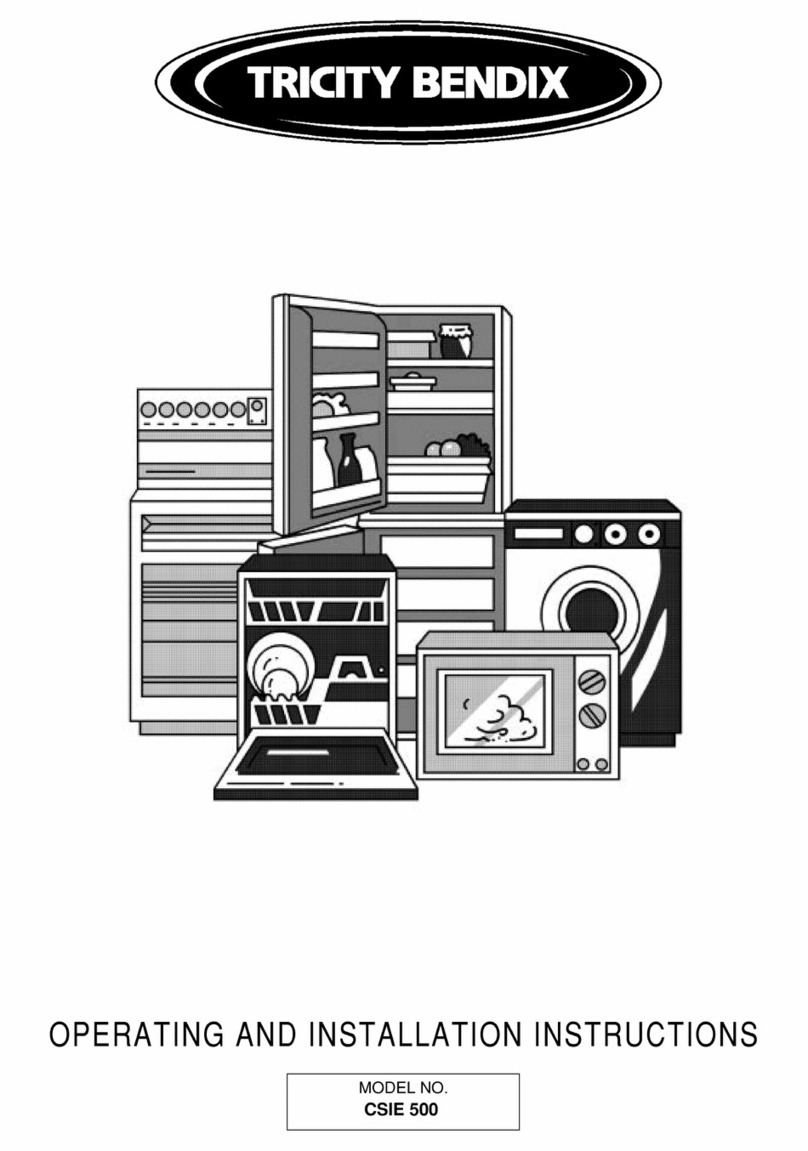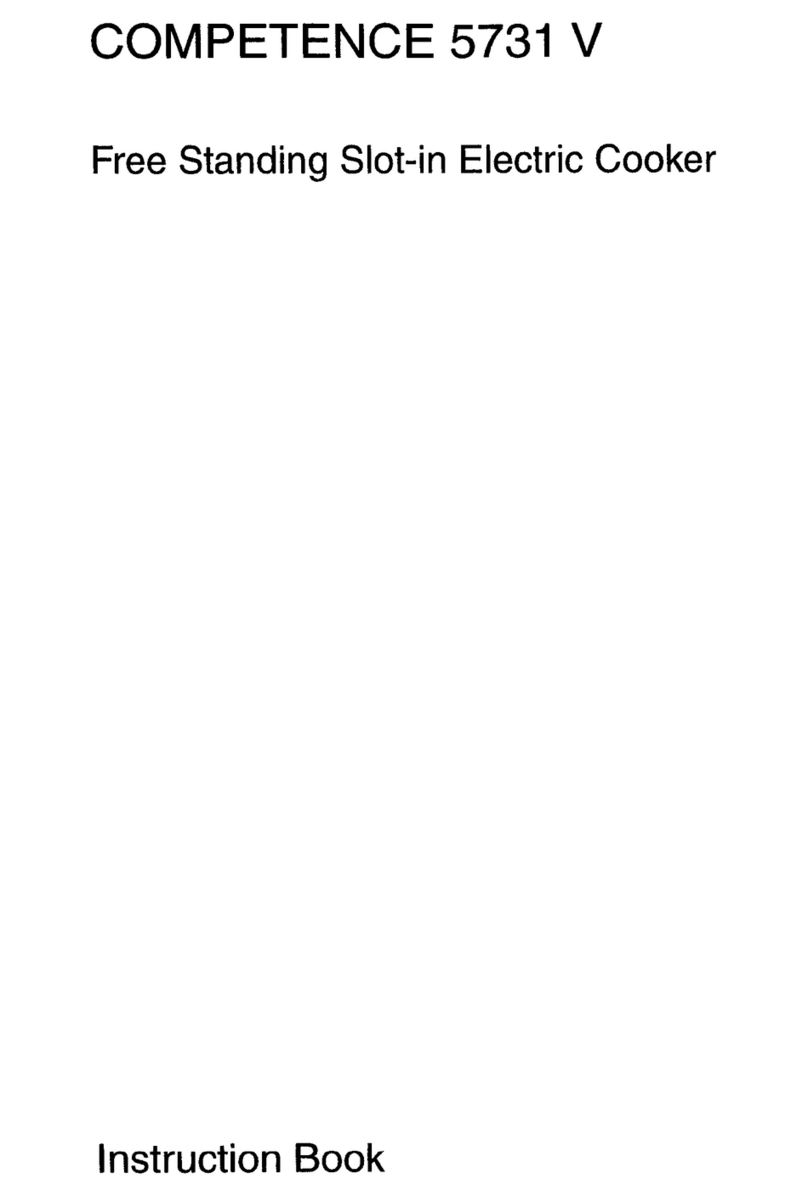4
TECHNICAL INSTRUCTIONS AND INSTALLATION
IMPORTANT
WARNINGS
• Installation of the appliance (installation class:3) into a kitchen worktop and its connection
to the power mains and the gas supply may only be performed by an adequately qualified
technician.
• When the appliance is in use, additional heat and moisture are emitted into the room. When
the appliance is used for a prolonged period of time at a high performance level, intensive
ventilation or use of kitchen hood may is required in the room where the appliance is
installed.
• Do not use the gas burners, if the flame seems unstable.
• If you smell gas in the room, immediately close the gas supply valve either on the gas bottle
or gas pipeline, extinguish all sources of open fire (including cigarettes), aerate the room, do
not turn on any electric appliances, and call a natural gas expert.
• The main gas supply valve should also be closed if gas burners will be out of use for a long
period of time (e.g. when going on holiday).
• The appliance and its accessible parts become hot during use. Care should be
taken to avoid touching heating elements. Children less than 8 years of age shall
be kept away unless continuously supervised.
Prevent the children to hang around the appliance and warn them properly against the
danger of burns.
• This appliance can be used by children aged from 8 years and above, and persons with
reduced physical, sensory or mental capabilities or lack of experience and knowledge if they
have been given supervision or instruction concerning use of the appliance in a safe way and
understand the hazards involved. Children shall not play with the appliance. Cleaning and
user maintenance shall not be made by children without supervision.
• WARNING: Unattended cooking on a hob with fat or oil can be dangerous and
may result in fire.Be sure have the preparation of such food (fries) under constant control.
Never try to extinguish a fire with water, but switch off the appliance and then cover flame
e.g. with a lid or a fire blanket.
• WARNING: Danger of fire: do not store items on the cooking surfaces.
• WARNING: If the surface is cracked, switch off the appliance to avoid the
possibility of electric shock.
• Do not use high-pressure steam cleaner or hot steam to clean the appliance.
• Never place any metal objects upon the hob surface, such as knives, forks, spoons, pot
lids, and the like, as they may get very hot.
• The hob can not be activated by external timers or remote controls systems.
• Do not use the cooking hob for room heating.
• Do not place empty pans on the hob.
• Make sure that the parts of the burners are correctly positioned / installed.
• Hob surface should not be used as a worktop. Sharp objects may cause scratches.
• Preparing food in thin aluminum of plastic containers on hot cooking zones is not allowed.
Do not place any plastic objects or aluminum foil on the hob surface.
• If there is a wall power outlet located near the hob and another appliance is plugged into it,
make sure the power cord does not come into contact with the hot cooking zones.
• Do not store any temperature-sensitive objects, materials, or substances underneath the
hob, e.g. detergents, sprays, etc.
• In case of a failure of the appliance, immediately disconnect the appliance from the power
mains and contact the service center.
• The appliance is manufactured in compliance with the relevant effective safety standards.
• After a prolonged use of cast iron plates, the area of the plate and the edge of the cooking
zone may discolour. Repair service is not covered by the warranty.
• Don't connect the hob to the power supply with an extension cable or multiple sockets,
because they don't assure a sufficient safety (e.g. overheating risk of multiple sockets).
• Connect the equipment to a permanent connection.
T
treated as household waste. Instead it shall be handed over to the applicable collection
point for the recycling of electrical and electronic equipment. By ensuring this product is
disposed of correctly, you will help prevent potential negative consequences for the
environment and human health, which could otherwise be caused by inappropriate waste
handling of thisproduct. For more detailed information about recycling of this product,
please contact your local city offi ce, your household waste disposal service or the shop
where you purchased the product.

